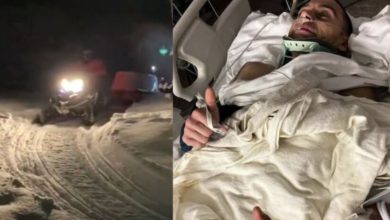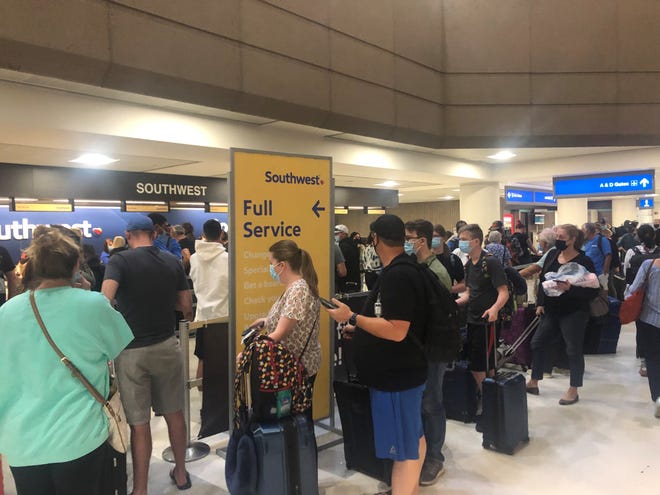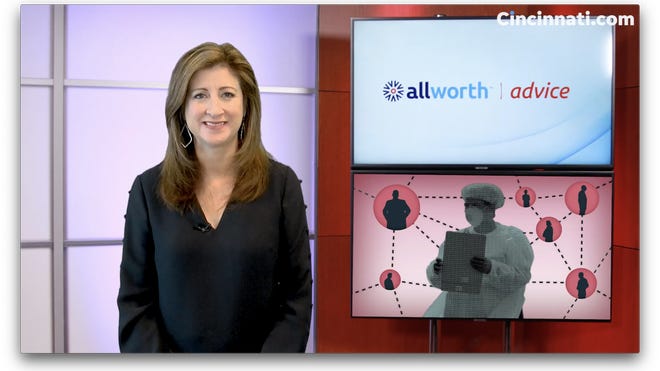
Kacy Carter spent the entire school day tracking students and contacting parents.
The principal at Stark County's Jackson Memorial Middle School near Massillon, Ohio, wasn’t calling them about grades or bad behavior. His call actually had nothing to do with education.
He was notifying parents that their child had been in close contact with someone who tested positive for COVID-19 and that they needed to quarantine.
Schools across Ohio, Kentucky and the nation have been performing contact tracing to mitigate the spread of COVID-19 for well over a year now, calling families and tracking case numbers on a daily, hourly, sometimes minute-by-minute basis.
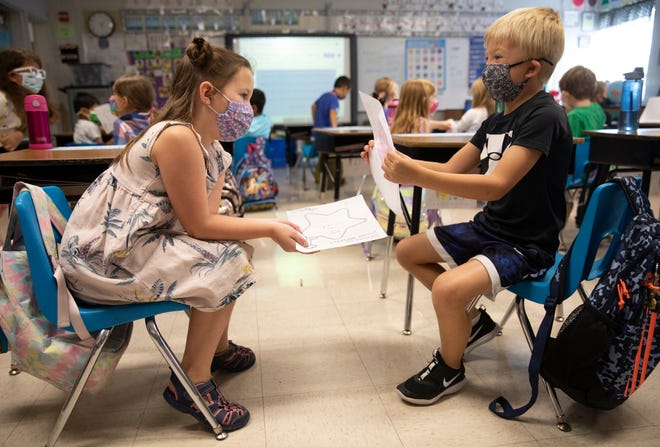
Keeping up with contact tracing feels like a full-time job in itself, said Jennifer Stewart, Newport (Kentucky) Independent Schools' director of pupil personnel and student services.
But in many cases, principals and superintendents (sometimes assisted by school nurses) who are already busy with other required daily tasks – evaluating and training staff, coordinating school security and balancing budgets – are the ones putting in extra hours to fulfill their schools' contact tracing needs.
COVID-19 in Ohio: 'They're all young': Ohio hospitals see more COVID-19 patients under 50
"A lot of this is occurring on Saturdays, Sundays and nights," Stewart said. "Our first (COVID-19 case this year), I was actually shopping with my children and we had to stop because we had a parent call in and leave a voicemail for us that her kid had tested positive for COVID, and the kid had been present for two hours of a school day."
It wasn't supposed to be this way.
In pre-pandemic times, local health departments tackled contact tracing on their own for illnesses including measles and hepatitis, and even lice outbreaks.
Health departments are responsible for tracking COVID-19 cases, and some are taking the lead on contact tracing in their communities or assisting school districts.
But in many areas, contact tracing for COVID-19 has become too large a task for local health departments to supervise, leaving the brunt of the work up to the schools themselves.
"Initially it was the job of the Northern Kentucky Health Department to do contact tracing for our schools. However, COVID has gotten too big even for them to handle alone," Northern Kentucky's Boone County Schools Community Relations Coordinator Barbara Cain-Brady said. "Our schools have nurses and we’ve also hired support staff to help the nurses with contact tracing.
"Yes, it is a strain on our district just as it is everywhere else."
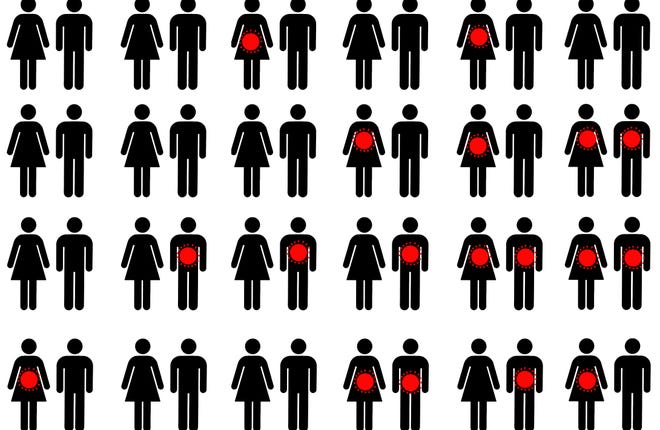
What's contact tracing? How is it used?
Contact tracing for COVID-19 is the process of identifying individuals who could have been exposed to the virus through close contact with a positive case.
It's required and used in schools to track any in-school spread of COVID-19, which experts say has been minimal compared with community spread – at least in schools where masks are required.
COVID-19 in children: Are schools contributing to a spike in COVID-19 cases among kids? Partly, experts explain.
Dr. Andi Shane, chief of the division of pediatric infectious diseases at Emory University School of Medicine and hospital epidemiologist at Children’s Healthcare of Atlanta, told USA TODAY that the national rise in child COVID-19 cases is not being caused by the schools themselves.
"It's the fact that people are not adhering to mitigation methods,” Shane said.
In practice, there are many steps and multiple people involved in contact tracing. John Eckert, director of business operations for the Forest Hills School District in suburban Cincinnati, explained the process after one student is reported to have tested positive for COVID-19:
- Parent calls the school's health office to confirm their child has tested positive for the virus.
- The health office communicates that information to the lead administrator in the building, likely a principal.
- The principal pulls up the student's schedule and notifies all of the students' teachers of the positive case.
- Teachers refer to their records to identify who was near that student, and also which students were masked at those times.
- Principal watches lunchroom footage or interviews other students to determine whom the infected child was near during lunch.
- Principal determines which students need to be quarantined and call those students' families.
- Principal sends out communications to the school community with updated COVID-19 case numbers.
If the students identified as close contacts have been vaccinated against COVID-19 or masked at the time of potential exposure, they do not need to quarantine at home.
Amanda Carter, media specialist with Hamilton County Public Health, said the majority of students quarantined in Ohio's third-largest county do not receive testing, so it's impossible to capture how many quarantined students actually contract COVID-19.
COVID-19 testing: ERs at Cincinnati area hospitals swamped by COVID-19 test seekers without symptoms
"We are relying on school districts to provide us information on close contacts since we cannot be in every school, all the time," Carter said. "With their help, we are then able to issue notifications for those who need to quarantine."
The health department is able to require quarantine and isolation under the Ohio Revised Code.
"The benefit of contact tracing is to quarantine potentially infectious people before they are able to spread the disease," Carter said. "The more accurately we can quarantine these close contacts, the faster we stop the spread of COVID-19 and keep more students in the classroom."
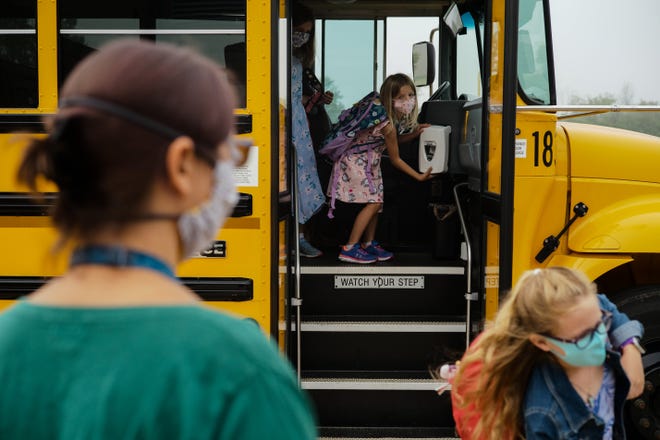
One case, hours of tracking
Here's what the result has been in Mason schools outside Cincinnati. One positive COVID-19 case at the middle or high school level takes about 70 minutes of a nurse's time and 75 minutes of an administrator's time to track and trace, said Tracey Carson, spokesperson for Warren County's largest school district.
At the elementary level, it's slightly less time-consuming because the students are usually in the same classroom each day. Carson said contact tracing typically takes about 50 minutes of a nurse's time at this level, and still 75 minutes from an administrator.
Keep in mind, there's also time eaten up when school counselors and teachers must follow up about remote learning options for each student who is in quarantine.
Add the hours that tracing is taking away from employees' other tasks and you see why administrators now are on the clock well after many workdays are done.
This strain is being felt all over the region.
At Milford Exempted Village School District, also in the Cincinnati suburbs, spokesperson Wendy Planicka said contact tracing is at times upending full days for the district's principals and assistant principals.
"Contact tracing takes administrators one to two hours per positive case, which includes 'walking' that child's schedule to see which classrooms they were in and if close contact could have occurred in the lunchroom, on the bus, or elsewhere, then the administrators contact those families," Planicka said.
"If we have more than two cases reported in one day, and we've had that happen frequently this year, contact tracing could take up half of their day or more. Our district nurse, Patty Price, works on COVID pretty much the entire day."
Making administrators contact tracers has had another nonmonetary cost. Mason's superintendent, Jonathan Cooper, said contact tracing has taken a toll on the district's culture and how children see administrators.
"You had administrators walking into classrooms and pulling kids out and sending kids home. And so you all of a sudden had this whole dynamic where our administrators, who worked really hard to build those relationships and a safe environment for our kids, and then we were putting them in the position to walk in and pull them out," Cooper said.
The Warren County school system hired a staff member to assist with and organize the district's contact tracing process in January, Cooper said. Other districts across Ohio have done the same, including Cincinnati Public Schools.
"Even with the additional support, quite a bit of time goes into the contact tracing and subsequent notifications each day," CPS spokesperson Krista Boyle said.
The district has ensured each classroom and yellow school bus has a seating chart to reduce the amount of time it takes to identify close contacts, Boyle said.
Akron Public Schools, like CPS, has enforced a universal masking policy since the early pandemic days. Akron schools' business manager, Debra Foulk, said this has led to fewer issues with classroom spread, and that most of the district's COVID-19 exposure is limited to extracurricular activities, like sports.
Contact tracing in Akron's schools is more manageable, too, because the Summit County health department splits the work. School administrators still help with tracking and looking up seating charts, but all communications to families go through the health department.
"Maybe we're efficient at it, but it still is time-consuming," Foulk said. "It is a top priority, it is a communicable class one disease. So sometimes, yes, there are different times when you will put something aside and have to put it aside because you've got to address an issue that just showed up. ...
"I won't tell you that this was easy to put together, we just happen to have a very longstanding relationship with our county health department."
The nationwide nursing shortage has also impacted the process at some districts.
New Lexington City Schools Superintendent Casey Coffey said Ohio's Perry County health department leads its contact tracing, though things are moving more slowly this year because school nurses are not assisting in the process anymore.
“The information at that time (last year) was seamless,” he said. “What we found out now is sometimes it’s very difficult to achieve the same result in a timely manner.”
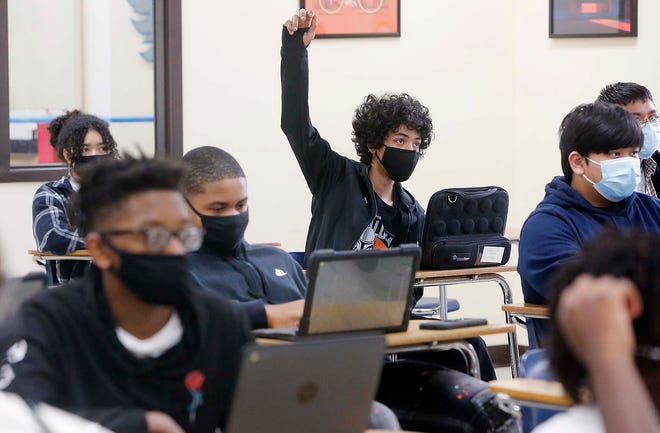
Is an end in sight?
Schools have been staying afloat by having administrators work overtime, but that won't be sustainable forever.
And forever may be what we're looking at. Eckert, of Forest Hills, said he doesn't know when contact tracing will end.
"My gut is the county will make us do this as long as the CDC believes we're within the pandemic," he said.
Gov. Mike DeWine held a media briefing recently with hospital leaders across the state who say they're seeing a growing number of younger, unvaccinated patients. Health experts say less masking than in 2020 could lead to a "twindemic," with flu season on its way.
Other school leaders are more optimistic. Cooper, Mason's superintendent, is leading the way on a state-sponsored pilot program that could do away with school quarantines entirely.
Whether quarantines persist in schools, most school leaders agree the best way to keep kids safe and in-person is by wearing a mask. A new study from Cincinnati Children's Hospital Medical Center shows schools with universal masking policies have fewer COVID-19 cases and fewer quarantines. That means less time spent on contact tracing, allowing administrators to go back to what they are meant to do – run schools.
COVID-19 in Ohio: 32 school districts switched to universal mask requirement in last week
"At the end of the day, we all want the same thing: to put our students in the best opportunity to have academic success, and experience as many extracurricular activities as possible," Jackson Local Schools Superintendent Christopher DiLoreto said.
Source link

